Past Future Perfect (2018)
Installation, variable dimensions
35mm slides, video, archival originals, print reproductions on paper, backlit and canvas, slides viewer, book, mannequin
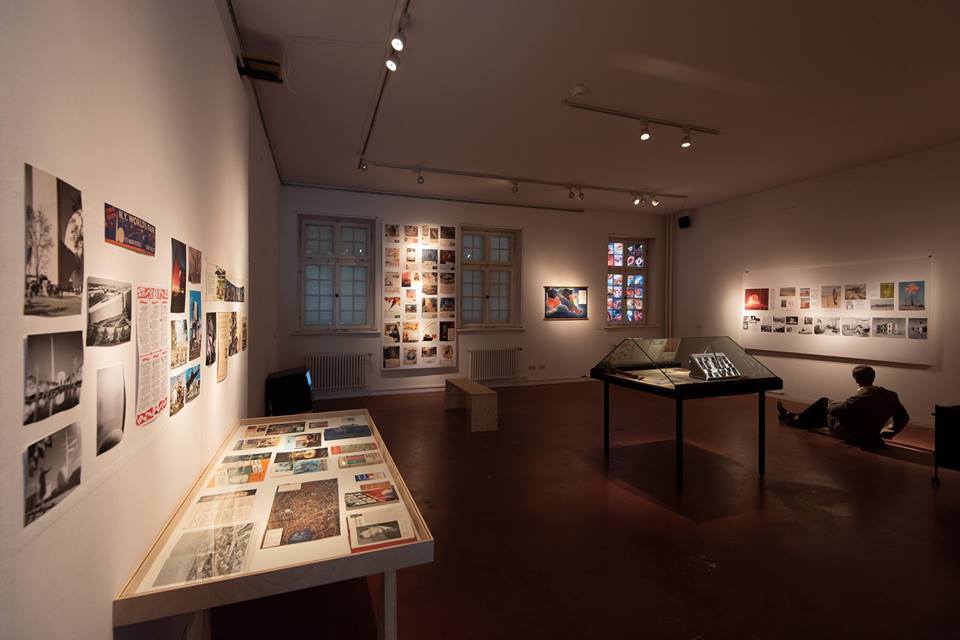
Installation view
During and after WWII, the industrial nations and the world saw a series of important changes in sciences and techno-scientific progress was seen as the driver of history. These so-called golden years of -largely military funded- scientific research where characterized by immediate implementation, limited corporate accountability, and the motto: “Science Finds, Industry Applies, Man Conforms”. Although largely secular and materialist, the history of technology has always been accompanied by myths of social transformation and transcendence to more democracy, peace, liberty, race and gender equality, free time and so on. History has it that some of these myths rarely materialized, but on the contrary, brought lasting negative impacts both on humans and the planet and on the other hand eventually recycled old power structures, superstitions and anxieties. These myths sink to oblivion when technologies are fully incorporated to our life, when they lose their phantasmagoria and enter banality, or even when they prove catastrophic.
Like an invented verb tense, Past Future Perfect revisits this particular era and ponders on the things that a promising future past delivered “not necessarily as-advertised”. In the work, the artist assumes the role of the curator of an idiosyncratic “museum” of technological history and material culture, consisting of an assemblage of found documents, souvenirs, ephemera, newsreels, and everyday memories, excavated from internet auction sites, online depositories and garbage dumps. By exposing these documents, the work aspires to loosely weave strands of known and less known stories from an era when the major technological myths were created, marketed and disseminated feeding the collective imaginary with hope and expectation. What followed is more or less known, besides spaceships, superhighways, benevolent robots and complex kitchen gadgets, we also got asbestos, DDT, plastics, CFCs and forever chemicals; the Exxon Valdez oil spill, Chernobyl and Bhopal. Without using any explicit visual reference to our present dystopias, the work delves into an industrial archaeology of the time that the future was all ours and something to dream about, which is not exactly the case in our time.
Chronologically -and symbolically- all these stories unfold between the two emblematic celebrations of the futuristic imaginary, the two New York World’s Fairs of 1939 and 1964. This timeframe, which is extending from the post Great depression years, through WWII and the Cold War, coincides with the period of The Great Acceleration in the Anthropocene discourse, where atmospheric, geologic, hydrologic, biospheric and other earth system processes were significantly altered by human influence and activity. Although the Cold War had two main opponents and several proxy actors, the focus is on the American corporate capitalist model and paradigm of scientific progress, that from mid 20th century to the present, defined post WWII western culture and evolved as the dominant one worldwide.
Past Future Perfect was commissioned by Akademie Schloss Solitude, Stuttgart and was the result of a three month residency (2017) in co-operation with Kunsthalle Athena. It was first presented as a solo show at the Akademie from 20/9/2018 to 7/12/2018, as part of the program “Postcards of a human landscape”.
Link to full documentation
Documentation Photos
(credits: Frank Kleinbach, Marina Gioti)
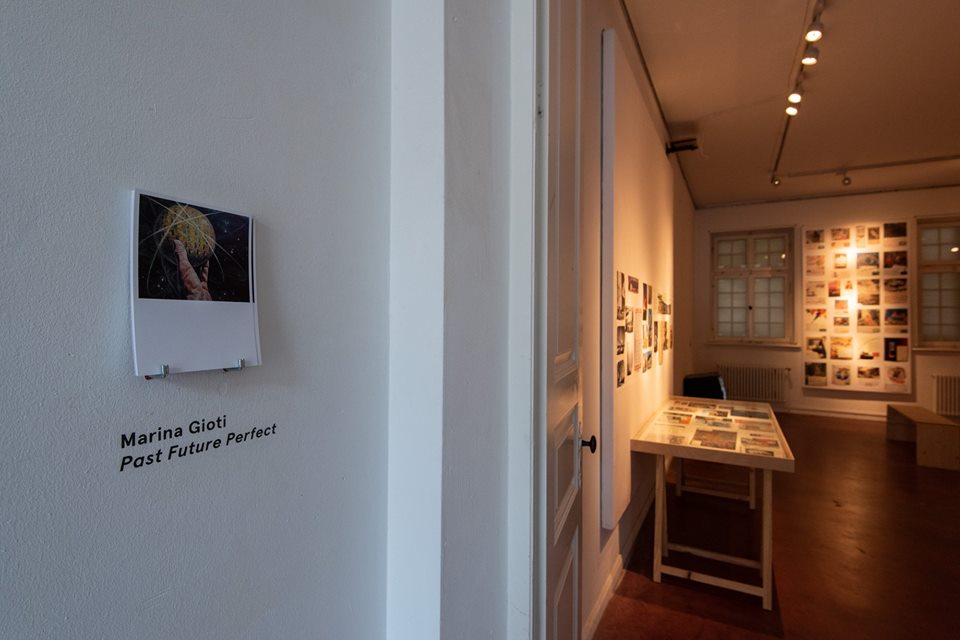
Installation view 1
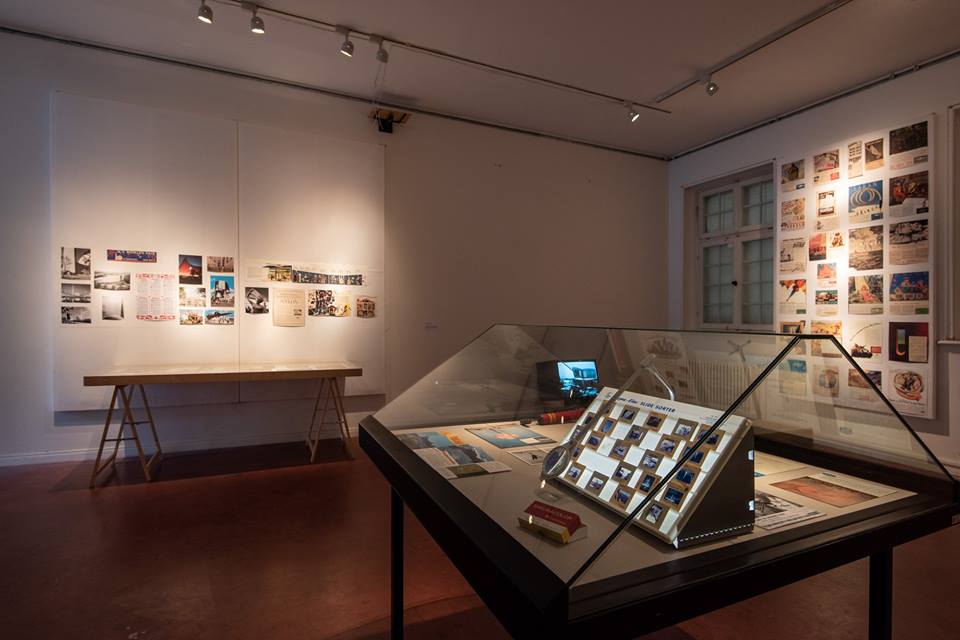
Installation view 2
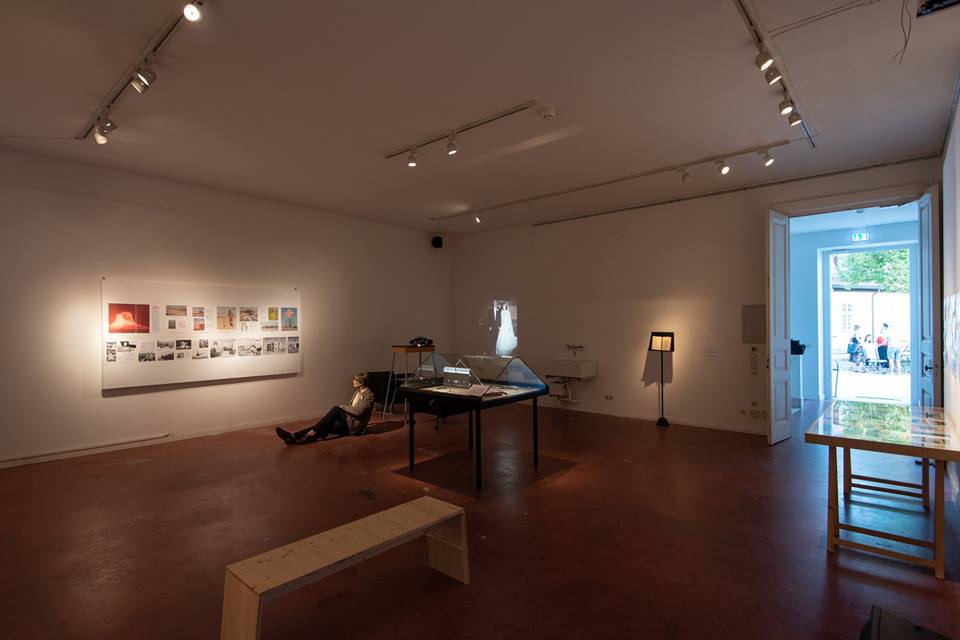
Installation View 3
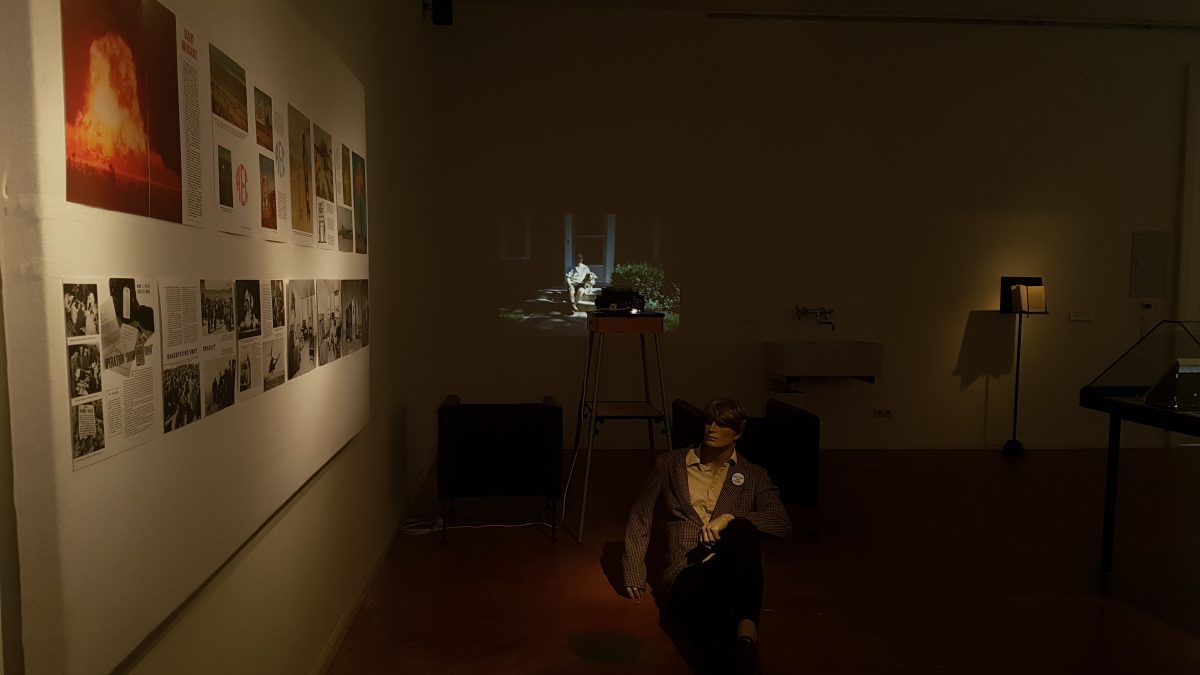
Installation view 4
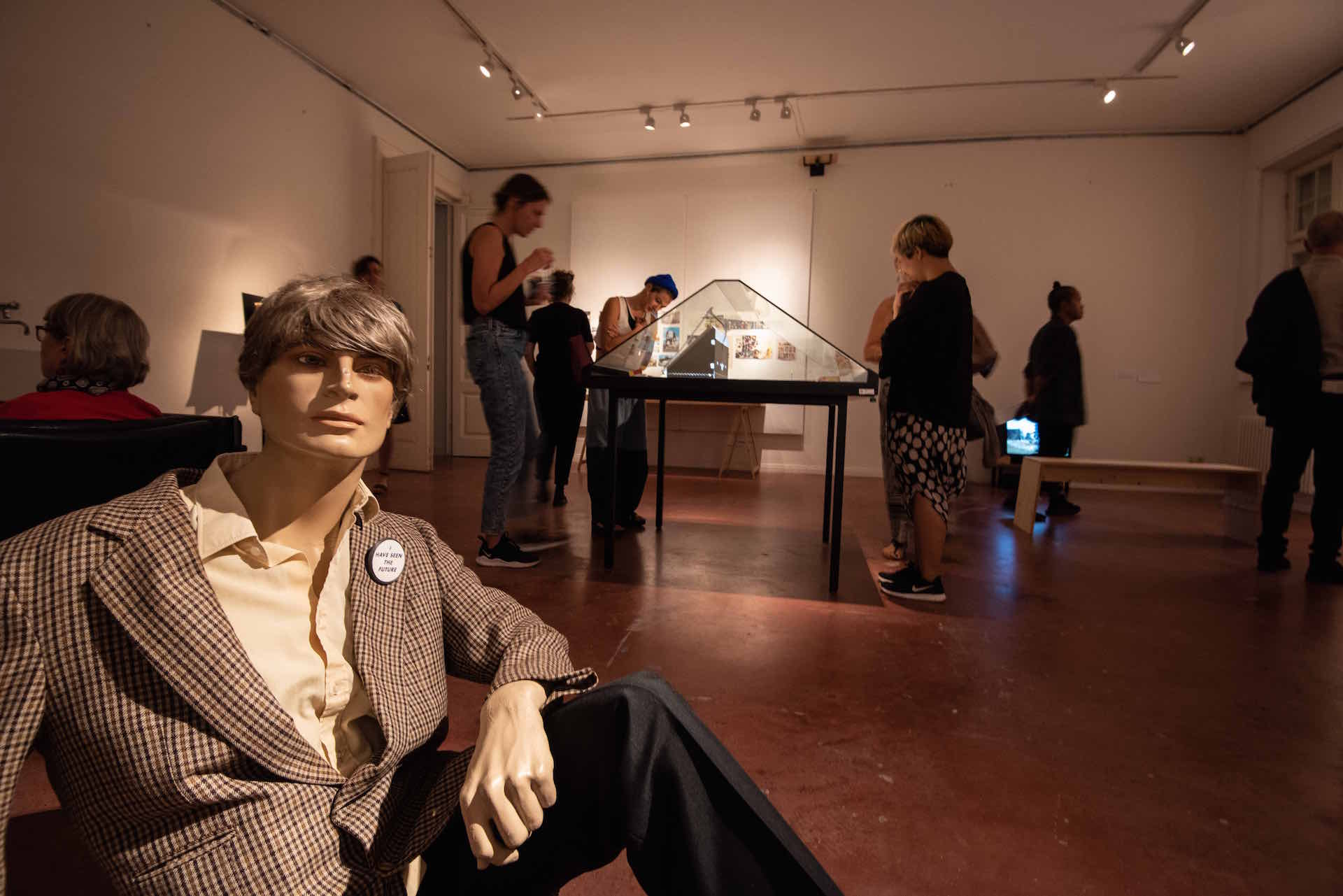
Installation view 5
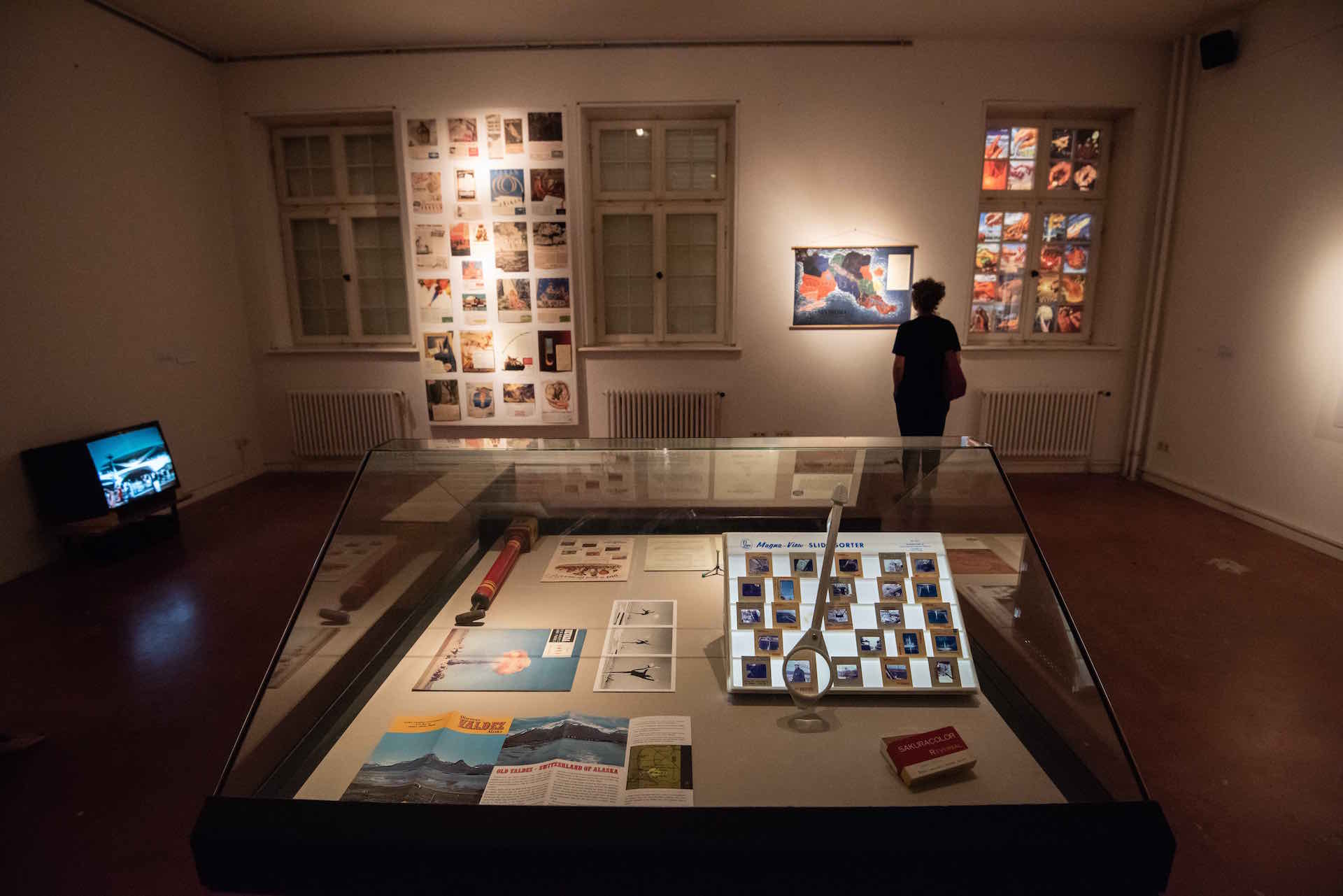
Installation view 6
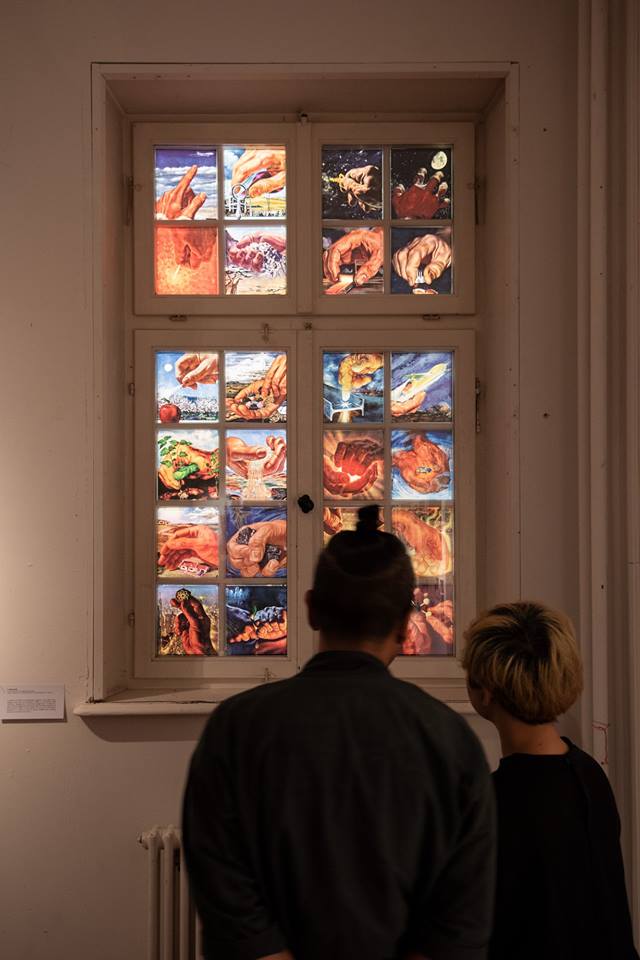
“A Hand in Things to Come” exhibit. Backlit print reproductions from Union Carbide print ads, ca. 1952-1965
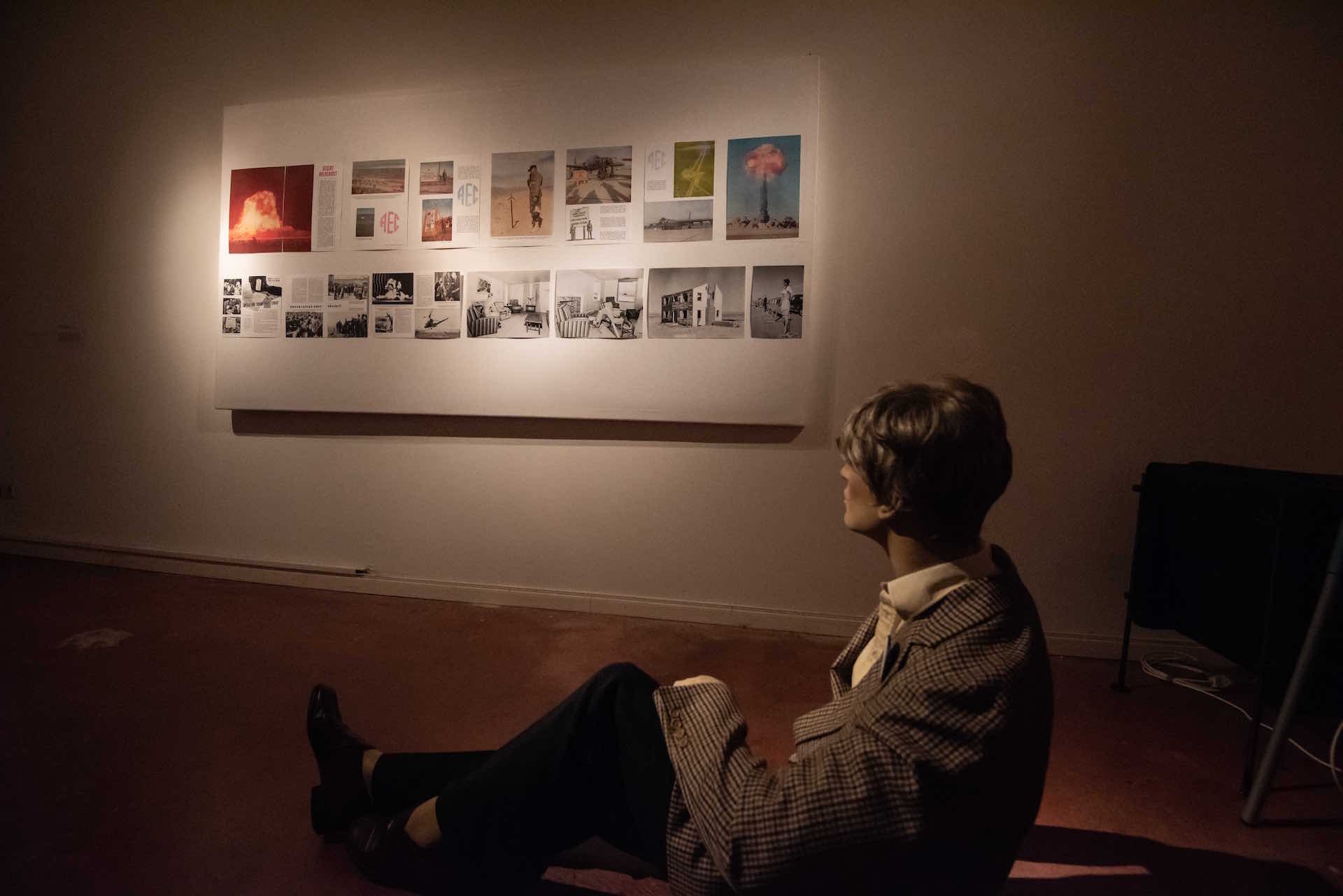
“Operation Doom-Town” exhibit. Print reproduction from Nevada Highways and Parks Magazine (ca.1953), male mannequin
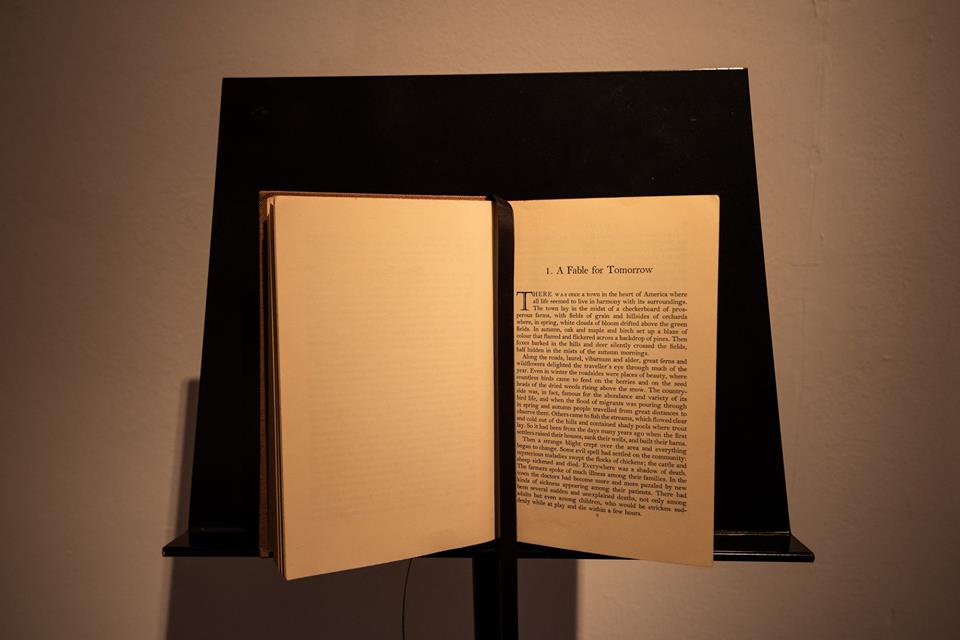
“A Fable for Tomorrow” exhibit. Rachel Carson “Silent Spring” book, Chapter 1
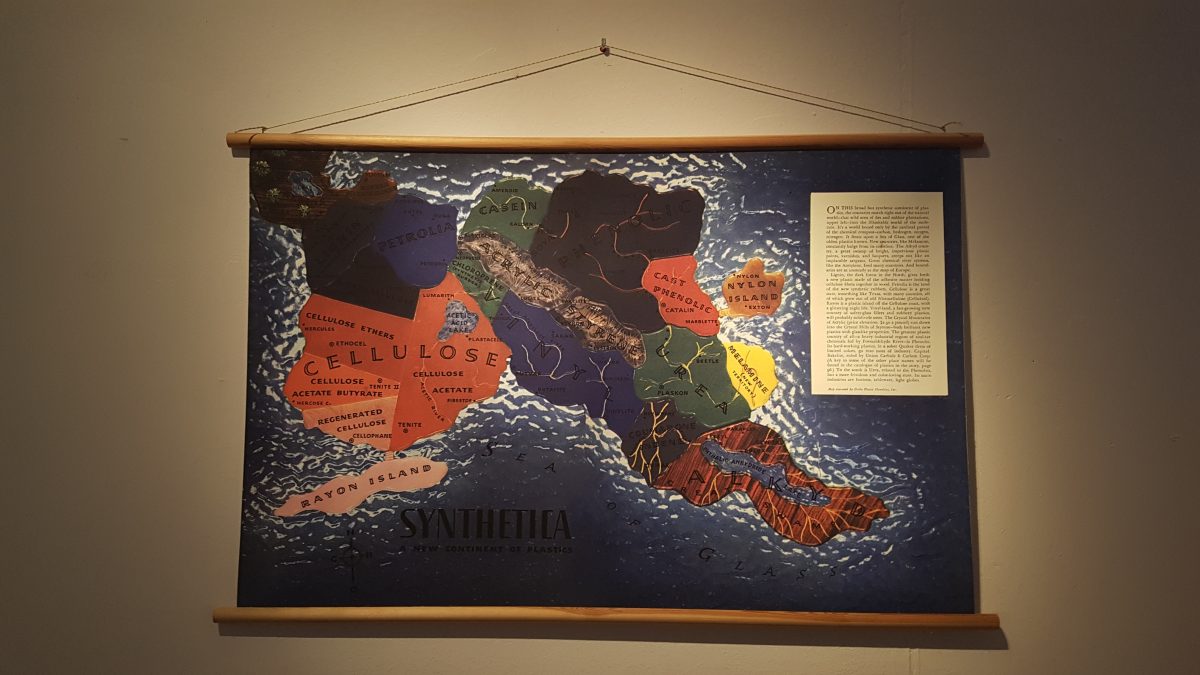
“New Lands” exhibit. Canvas print, wood. Reproduction from Fortune magazine (Oct. 1940) article
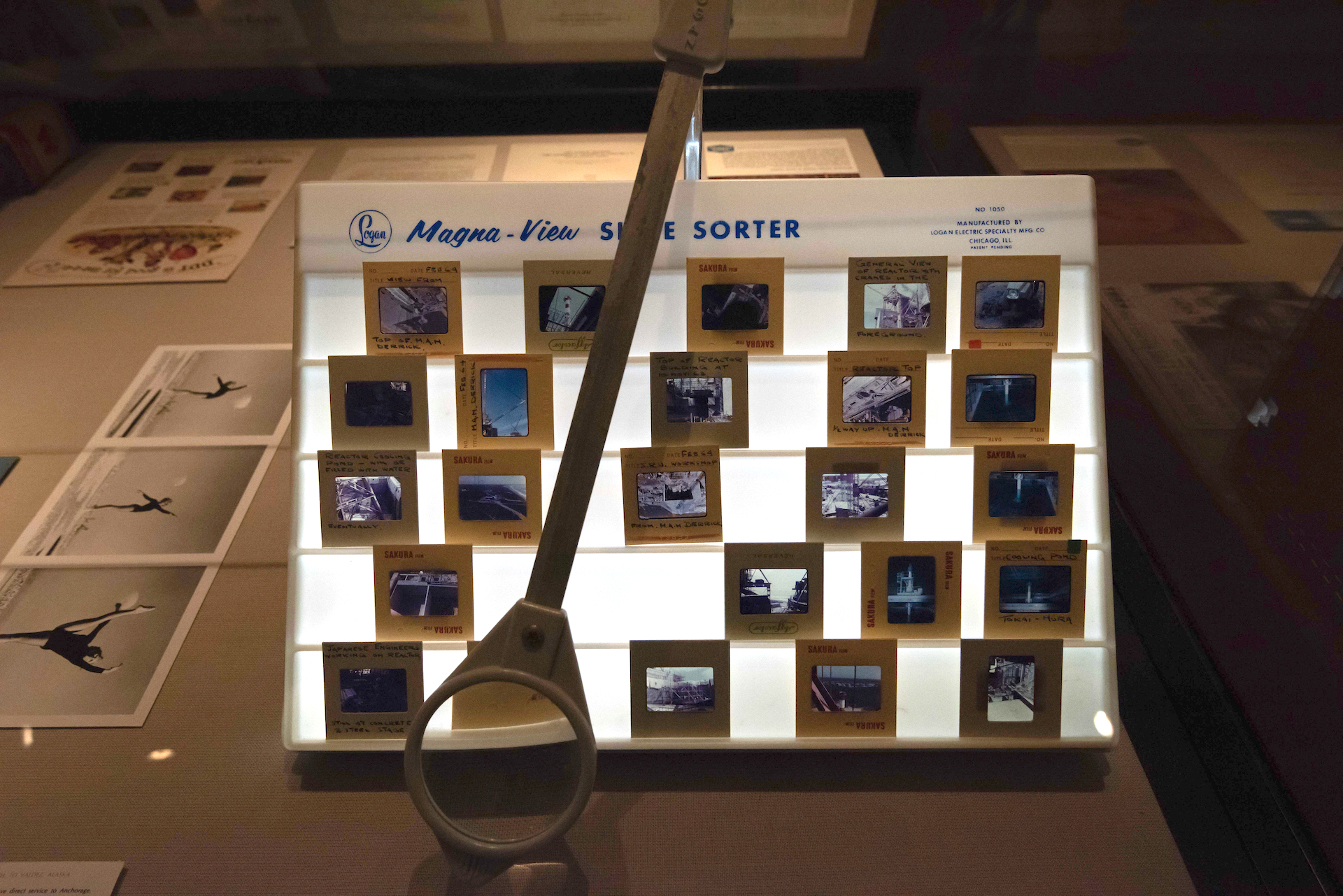
“Ruins In Reverse” exhibit, detail. Tokai Nuclear Plant, Japan construction diary (ca.1964). 35mm slides on Logan slide viewer
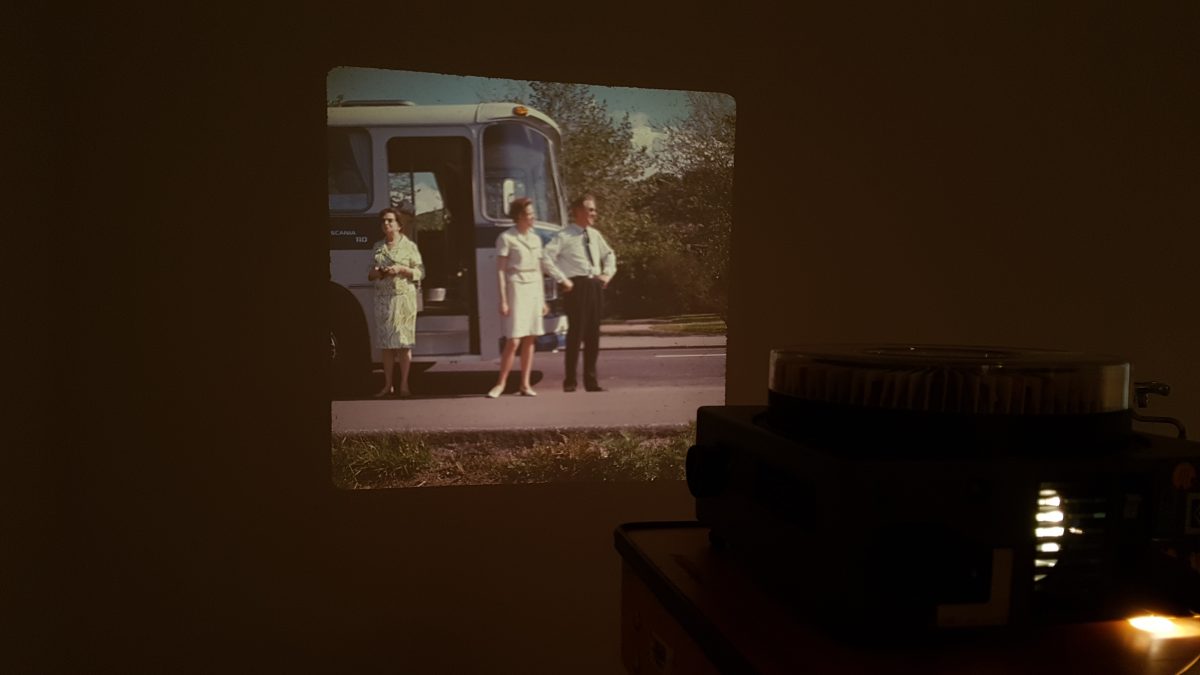
“There was once a town in the heart of America” exhibit, detail. Found family archive (ca. 1950-1970) on 35mm slides. Timed slide-show on Kodak Carousel
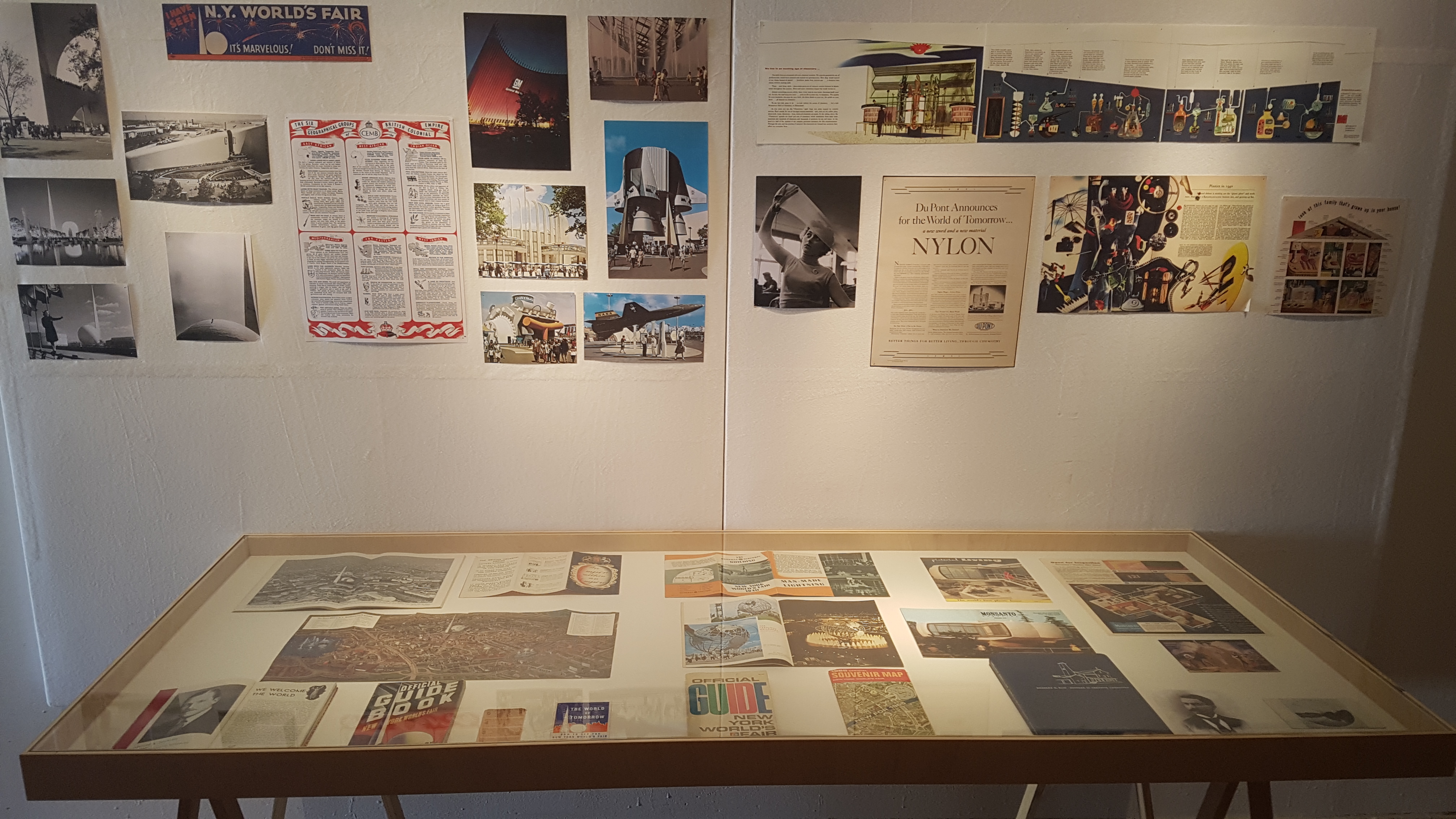
“The World of the Future” exhibit. Books, postcards, brochures and print reproductions
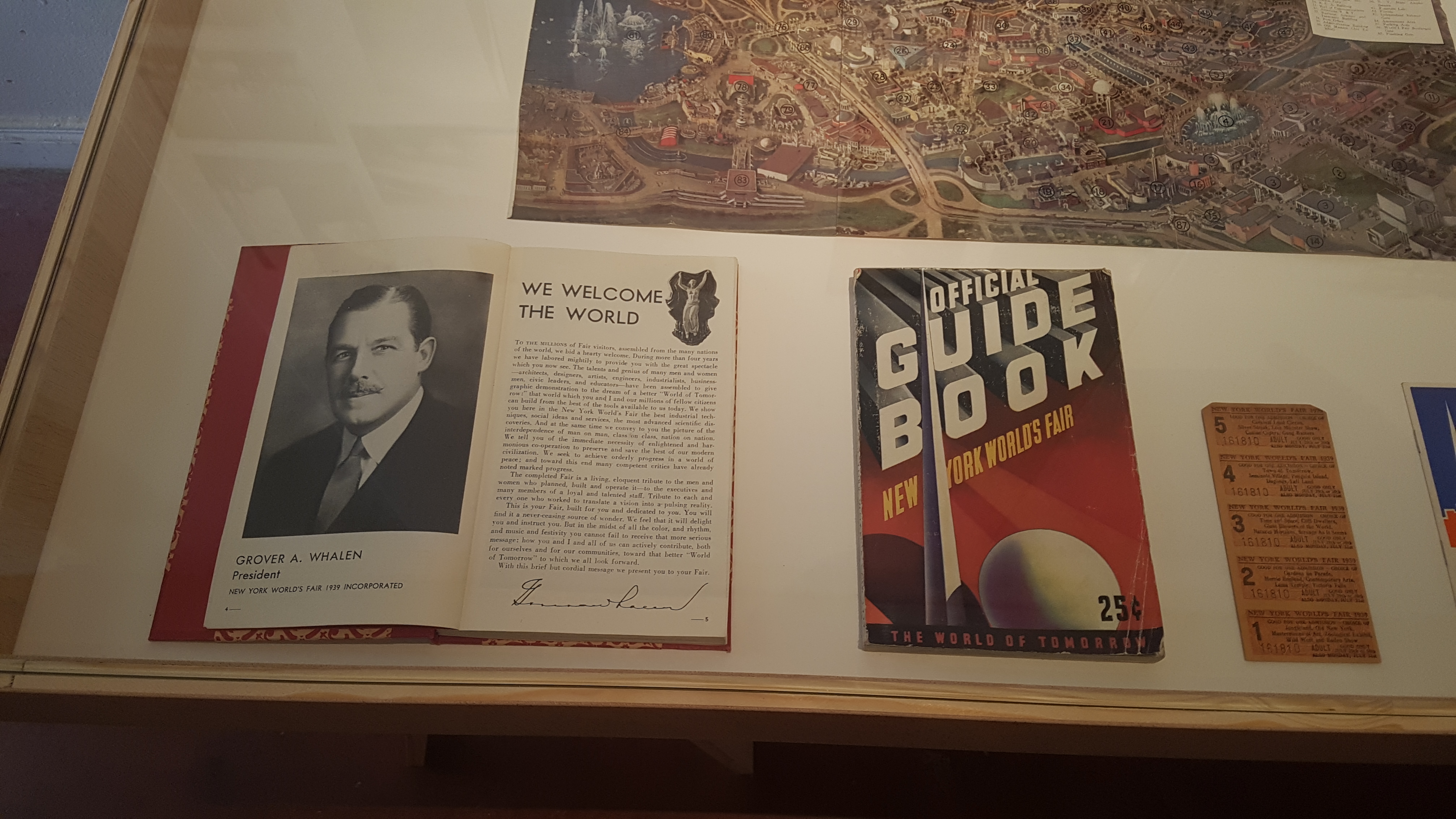
“The World of the Future” exhibit, detail 1. Books, map, tickets
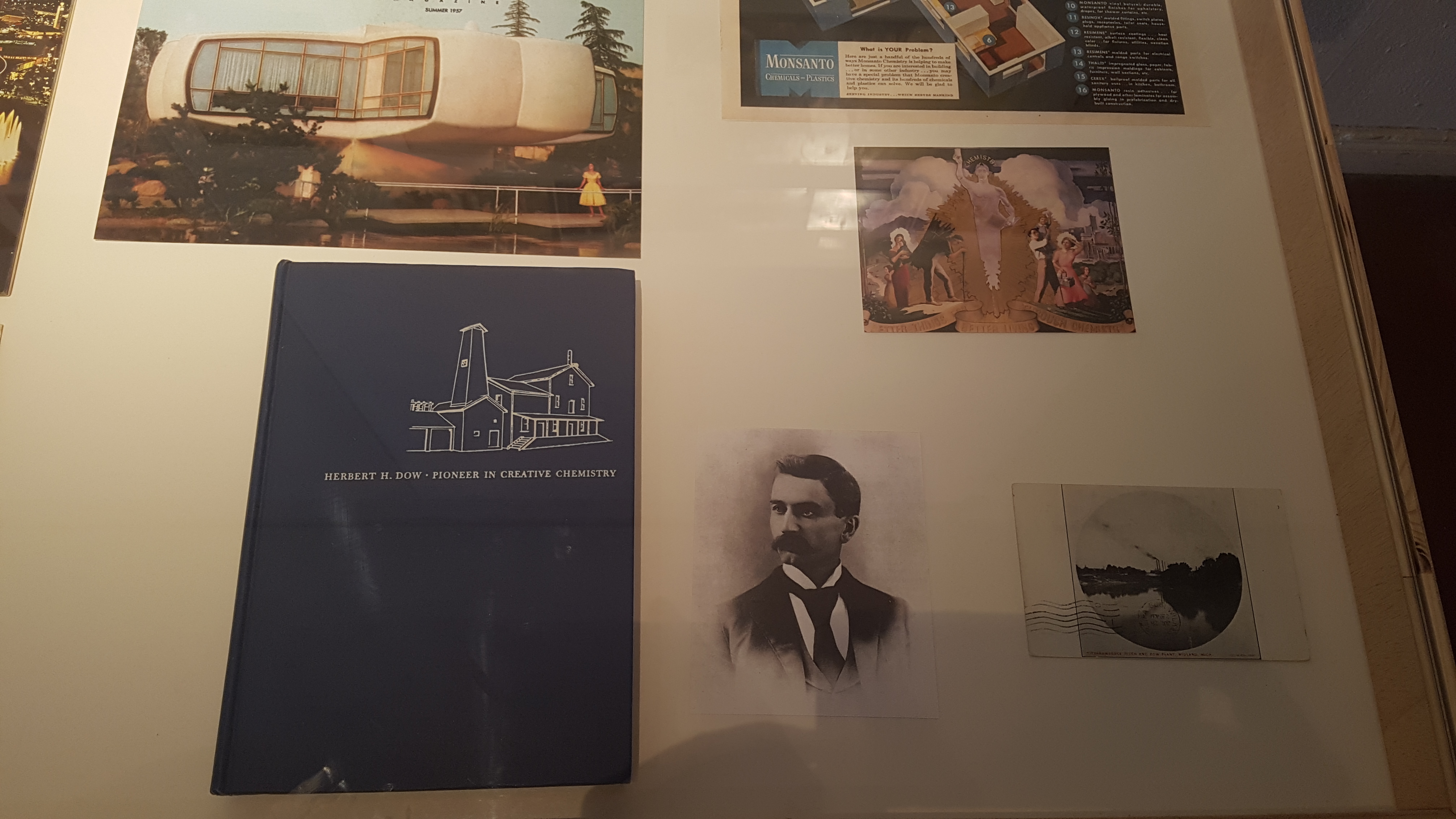
“The World of the Future” exhibit, detail 2. Book, postcards, print reproductions
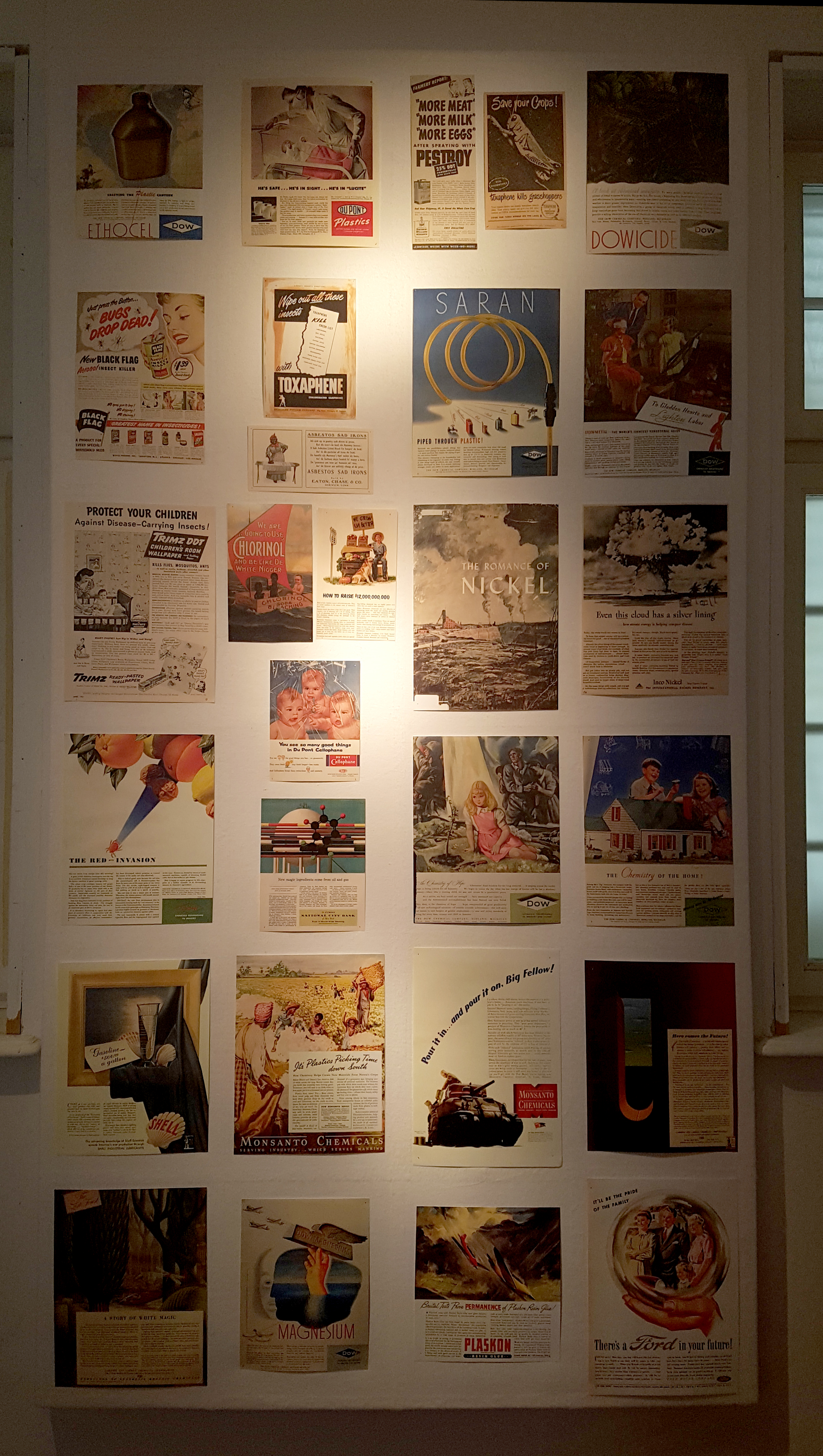
“Persuasion” exhibit, detail. Ads ca. 1945-1965, print reproductions Ads ca. 1945-1965, print reproductions